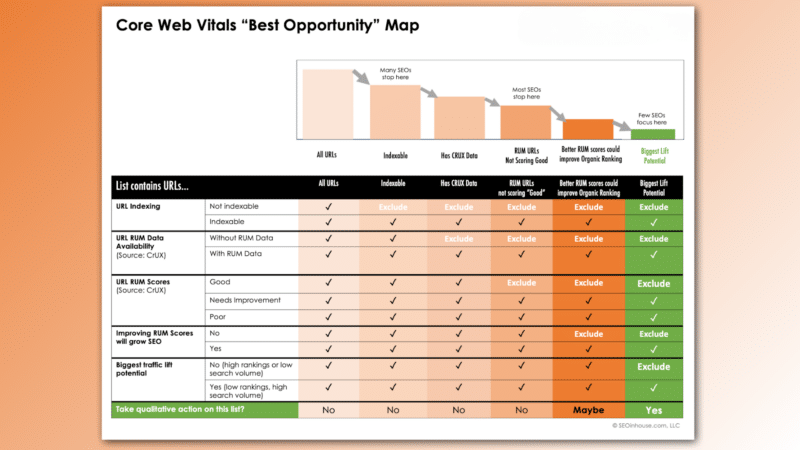
A big challenge for many SEO professionals is identifying what needs to change to move the needle.
This article recaps a topic from my SMX Advanced presentation on determining which URLs you should prioritize for Core Web Vitals.
Qualitative vs. quantitative SEO priorities
I’m a big fan of quantitative SEO changes impacting thousands of URLs simultaneously (especially for enterprise-level websites).
However, making quantitative improvements on thousands of URLs doesn’t mean the changes you make will actually improve the URLs, causing low or poor performance.
That’s where the Core Web Vitals opportunity map comes into play.
Meet the Core Web Vitals ‘best opportunity’ map
To determine which action to take, you must locate which URLs have scores that lower your Core Web Vitals metrics.
Taking it one step further, examine URLs that have the biggest lift potential.

The chart above illustrates various data segments to consider for Core Web Vitals improvements.
Notice it’s the last two segments on the right that have the opportunity to grow traffic if Core Web Vitals metrics improve:
- URLs with an opportunity to improve organic rankings if real user monitoring (RUM) scores improve.
- URLs with the biggest lift potential.
Below is a handy resource to help you understand each segment and identify the segment that warrants your qualitative attention.

To summarize the table above:
- Many SEOs look at Core Web Vitals for any indexable URL. In reality, you should prioritize (and analyze) Core Web Vitals URLs that have RUM Data in Google CrUX. Unfortunately, this segment has too many URLs that won’t experience an increase in rankings and revenue.
- Many SEOs focus on any indexable URL with low-scoring Core Web Vitals metrics from CrUX. However, this segment also has too many URLs that won’t increase rankings and revenue.
- The best approach is to identify a segment of URLs with:
- RUM data in Google CrUX with scores of “Needs Improvement” or “Poor.”
- An opportunity to improve rankings if Core Web Vitals Metrics improve.
- Keywords mapped to the URL with high search volume (which translates to high traffic and revenue potential).
How to identify URLs with the ‘biggest lift potential’
URLs with the biggest lift potential are those with an opportunity to increase traffic and revenue. Attributes of these URLs include (but are not limited to):
- The URL is not already a top ranker for targeted keywords with high search volume.
- Page copy that is keyword-rich, likely because it was optimized.
- For a given targeted keyword: The top rankers’ scores are high, but your URL mapped to the keyword has low Core Web Vitals scores.
Getting started on qualitative analysis for quantitative changes
How to conduct a qualitative analysis for quantitative changes is beyond the scope of this article. But, to get you started, here are the next steps:
- Segment the URLs into groupings of shared code (e.g., Category Page, Product Grid Page, Product Detail Page, Article, etc.).
- Analyze URLs in each grouping via Google Page Speed Insights and WebPageTest.org. Remember to log in when using WebPageTest.org; it will save all your test results.
- If you’re savvy enough to use the CrUX API, getting data at scale will be much easier.
Use these tools to analyze individual URLs and identify improvements that can be applied at scale. This enables you to make quantitative changes across hundreds or thousands of URLs simultaneously.
The key outcome of this analysis is that it will find the “best opportunities” for improving URLs with the biggest lift potential (greatest traffic and revenue increase opportunities).
A few tips for analyzing URLs in Google Page Speed Insights
- Confirm that the Core Web Vitals data reported is for the URL, not the origin. This is easily missed by less experienced SEOs and developers, causing them to evaluate origin data rather than URL data.
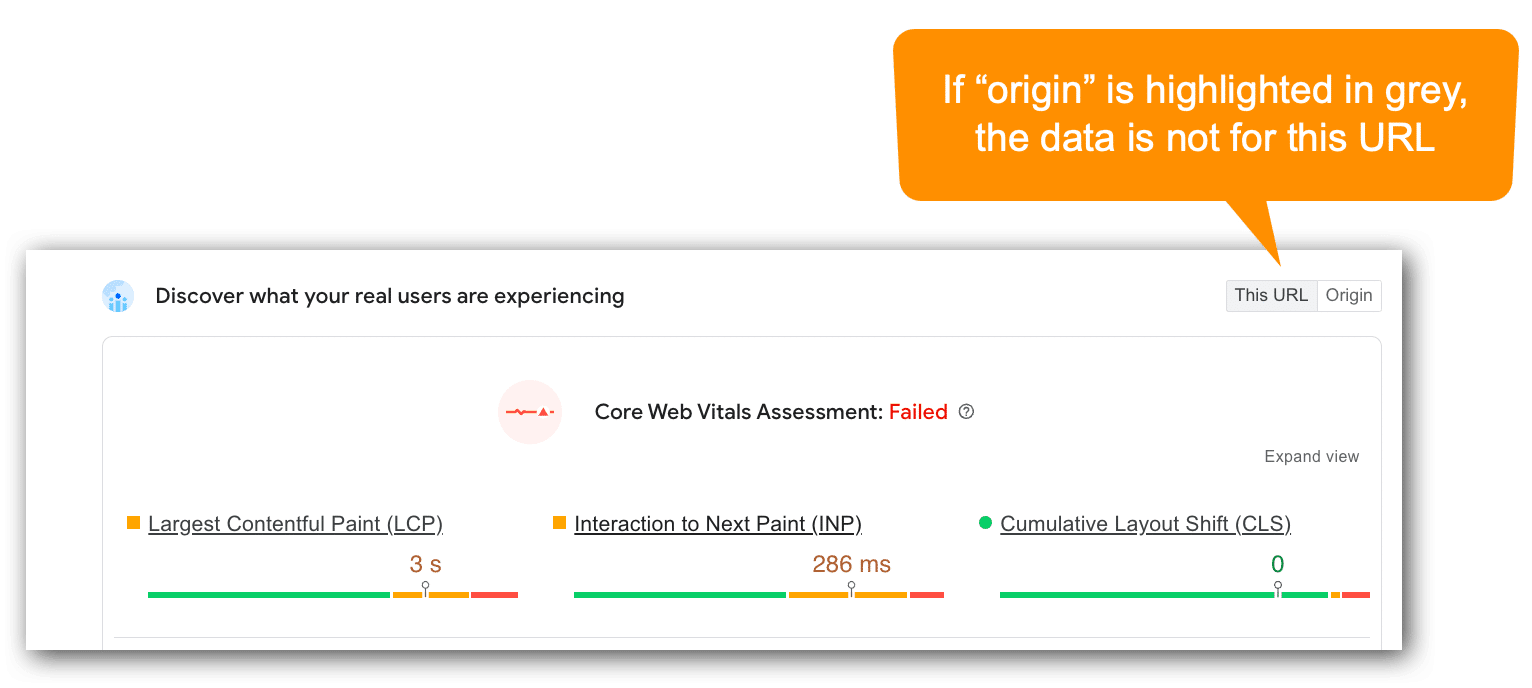
- Determine which metrics need improvement and use the filters to identify recommendations for improving the metric.

- Use the treemap to identify unused code.
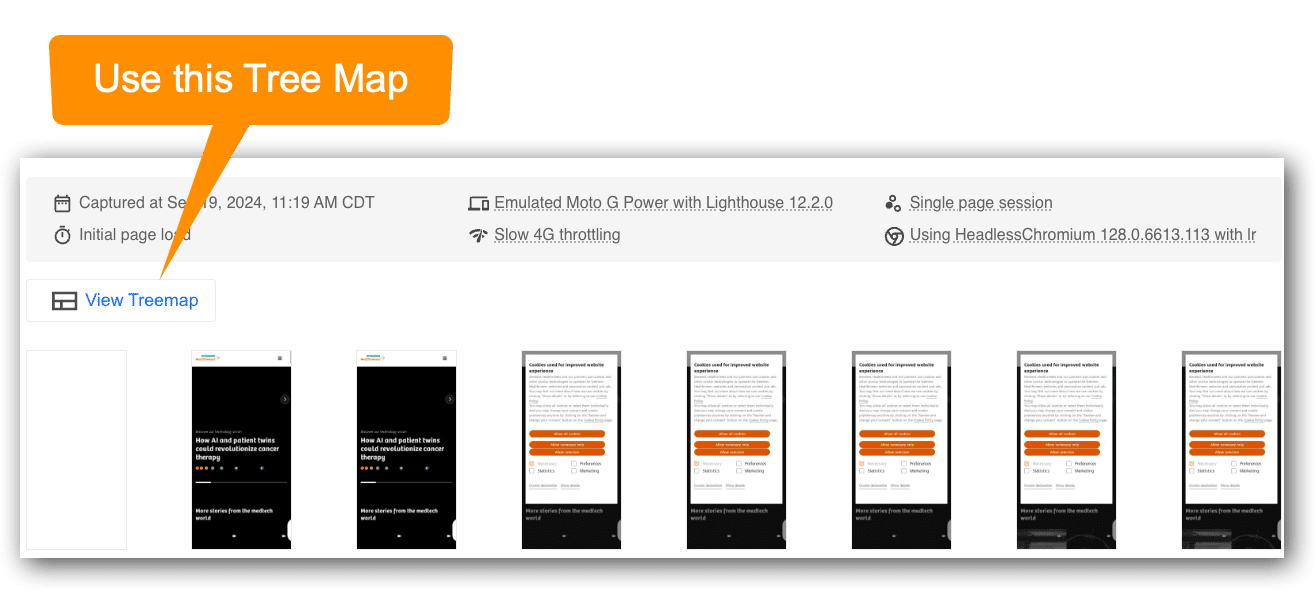
A few tips for analyzing URLs in WebPageTest.org
WebPageTest.org is a treasure trove of insights for improving the entire page speed experience. Here are just a few tips for using WebPageTest.org for Core Web Vitals.
- Don’t wait until the last minute. All tests go in a queue, and at the end of the month and certain times of the day, tests can take some time to run.
- The filmstrip view is fantastic for developers. They can see how the page loads visually, and beneath it is a waterfall chart showing what loaded when.
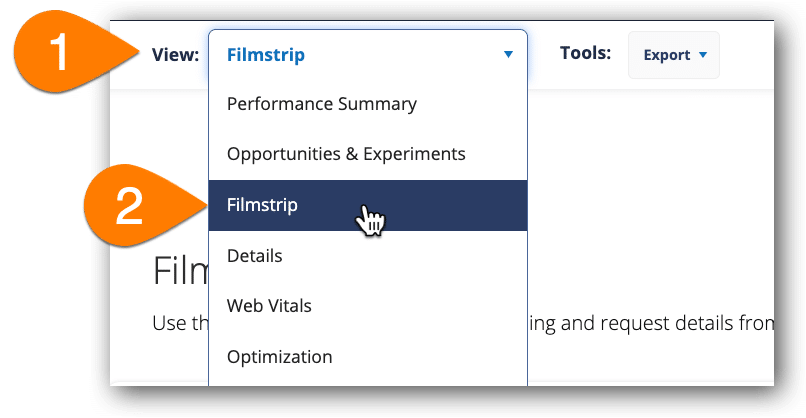
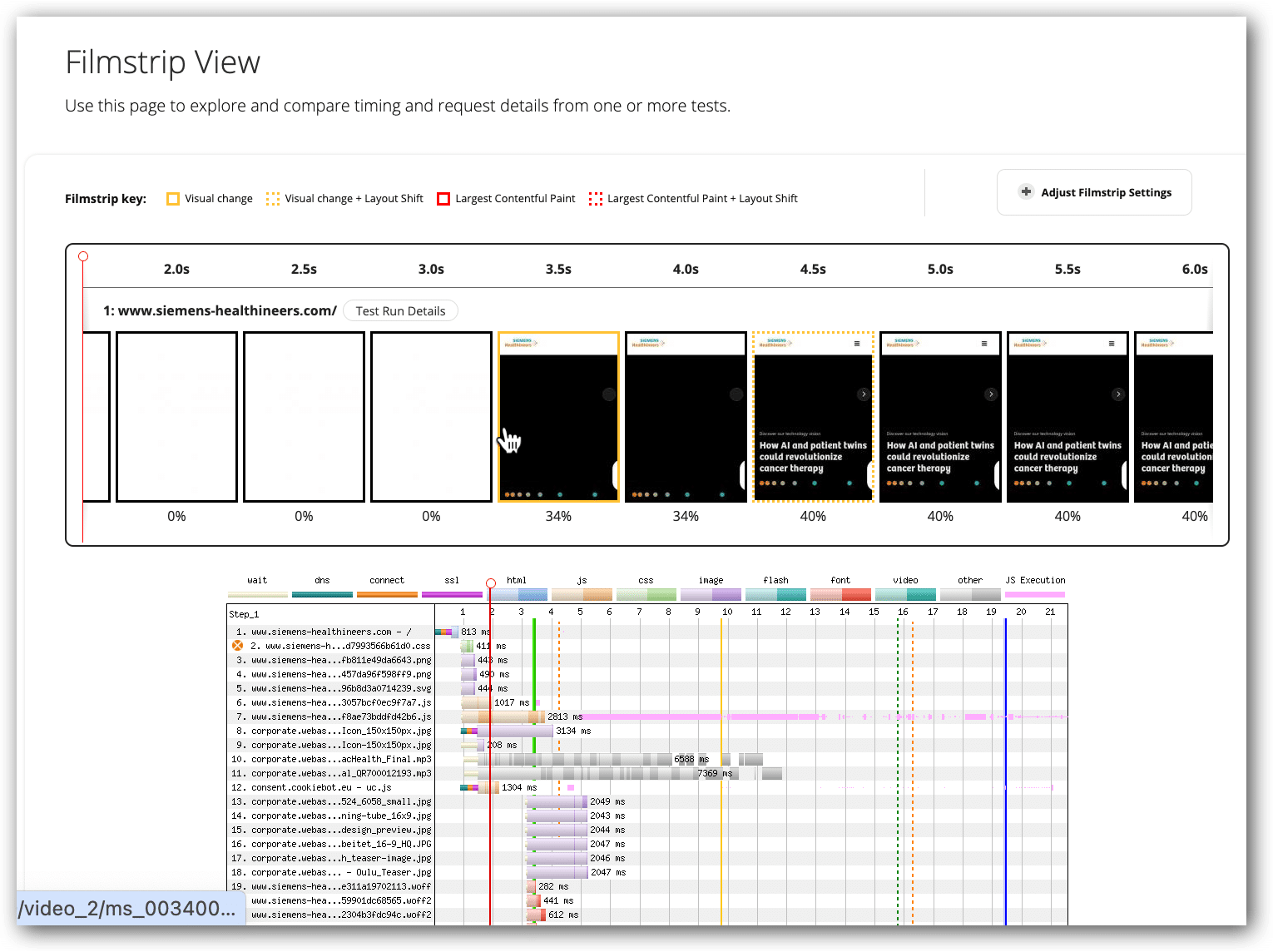
- Use the Web Vitals page as a highlights reel for explaining the most important issues to address. It’s a very nice summary page. It does not cover all your opportunities, but it’s a good start for common issues.
- The Web Vitals view page allows you to easily see where the CLS issue(s) are. This is great visual for developers to understand the problem quickly.

What’s next?
Begin evaluating Core Web Vitals data differently, prioritizing your attention on URLs with the biggest lift potential.
To get this data, you need to access the CrUX API and curate it into meaningful segments to analyze (using shared code/templates).
Then, start looking for patterns of problems to analyze that will improve Core Web Vitals metrics across many URLs. You often only need to look at a few URLs to spot clear action items.
This was the fourth article in my series recapping my SMX presentation on identifying action items in technical SEO data. You might find Part 1, Part 2 and Part 3 useful, especially for the up-and-coming technical SEOs on your team looking to accelerate their skills.
The next (and final) article in this series will discuss technical SEO use cases and how to use tools for various scenarios to uncover problems.
https://searchengineland.com/find-core-web-vitals-opportunities-447421